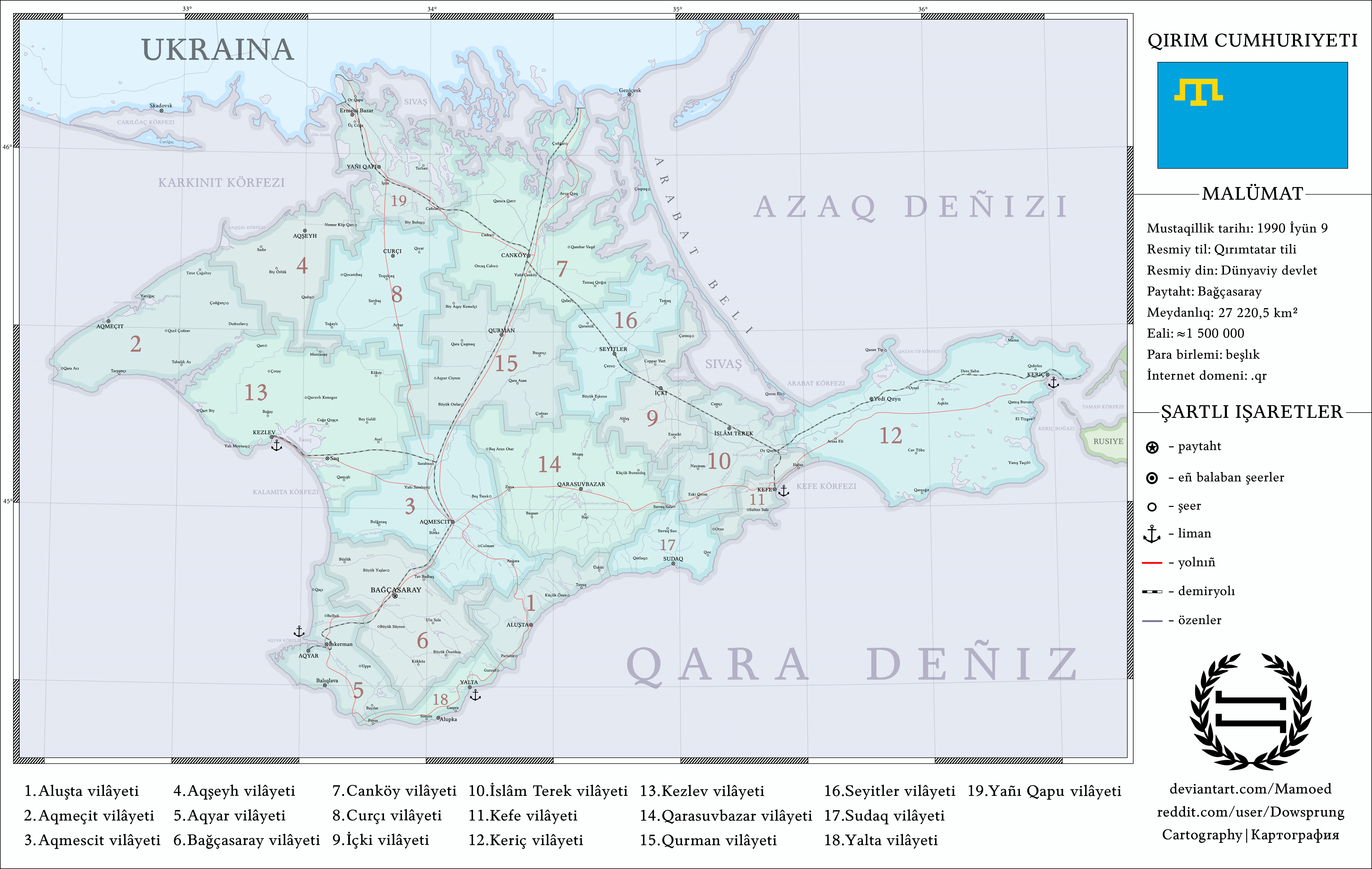 Mamoed on DeviantArthttps://www.deviantart.com/mamoed/art/Crimean-Republic-2013-1102723267Mamoed
Mamoed on DeviantArthttps://www.deviantart.com/mamoed/art/Crimean-Republic-2013-1102723267MamoedDeviation Actions
Description
Alternative map of the Crimean Republic in year 2013.
In this alternative, after Lenin's death in 1924, Stalin lost the struggle for power. The Soviet Union followed the path of a more federal and decentralized administrative division.
Crimea was directly affected by this policy. Initially created as the Crimean Autonomous Socialist Republic, this political entity (like other autonomous republics) later became a full-fledged Socialist Republic as part of USSR. Planned corenization was effectively implenented in the region until World War II, during which deportations of Crimean Tatars didn't happen.
Throughout the 20th century Crimean Tatar population gradually grew, while Russian and Ukrainian population decreased, due to ongoing corenization. In the 1960s and 1970s number of Crimean Tatars in the republic already exceeded 50% of the total population. Republic of Crimea declared state sovereignty on July 9, 1990 during the collapse of the USSR and subsequently gained full independence.
After gaining independence decline of Slavic population accelerated further due to the growth of linguistic and ethnic discrimination and general poverty in the region. By the late 2010s Crimean Tatars became the vast majority of the population of the peninsula. Although the region remains poor compared to other Eastern European countries that gained independence from the USSR, Republic of Crimea is, as of 2013, one of the most popular tourist destinations among post-Soviet countries, on which its economy is eventually based. The country relies heavily on water supplies from Ukraine, as well as Turkish and Russian investments.